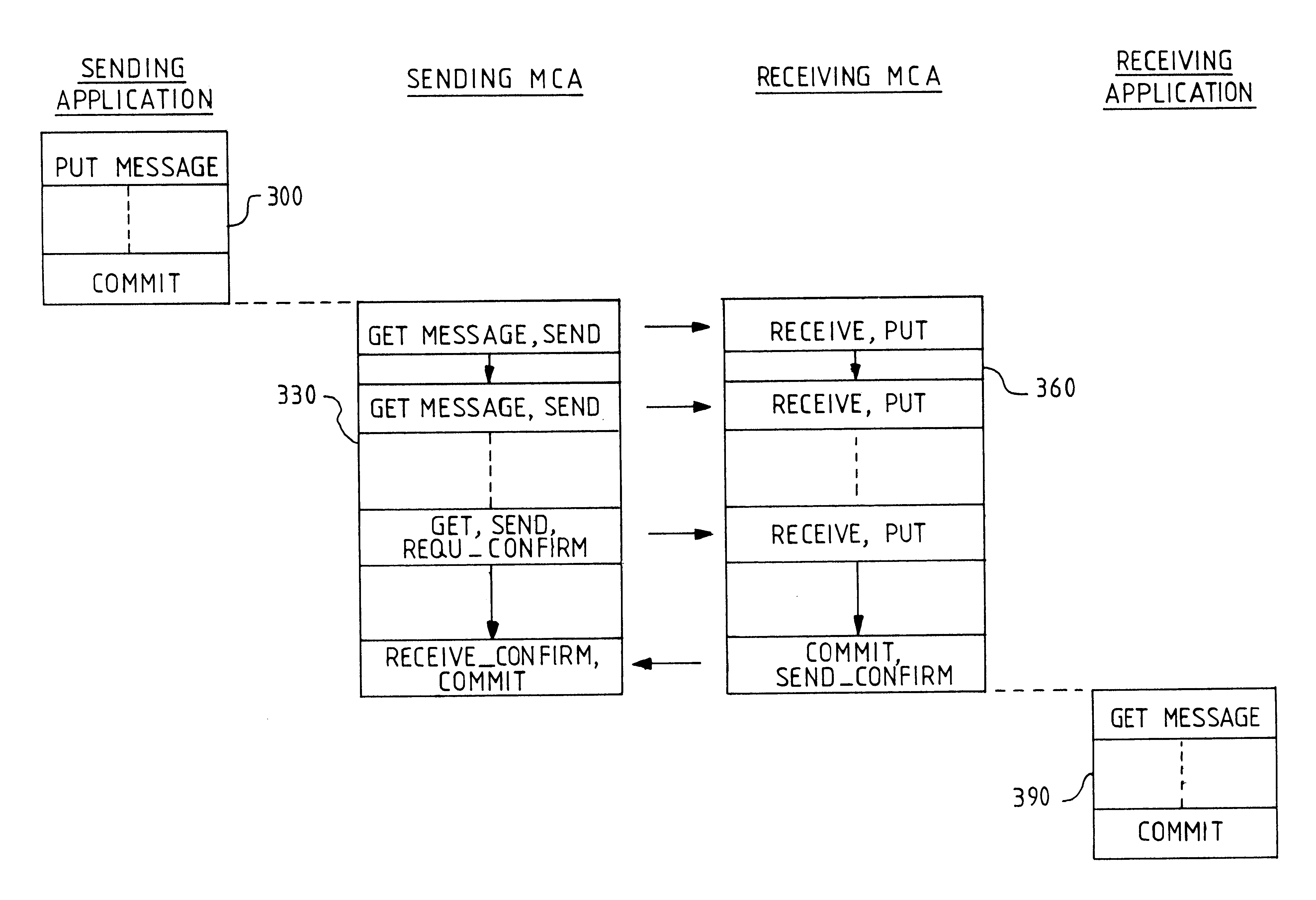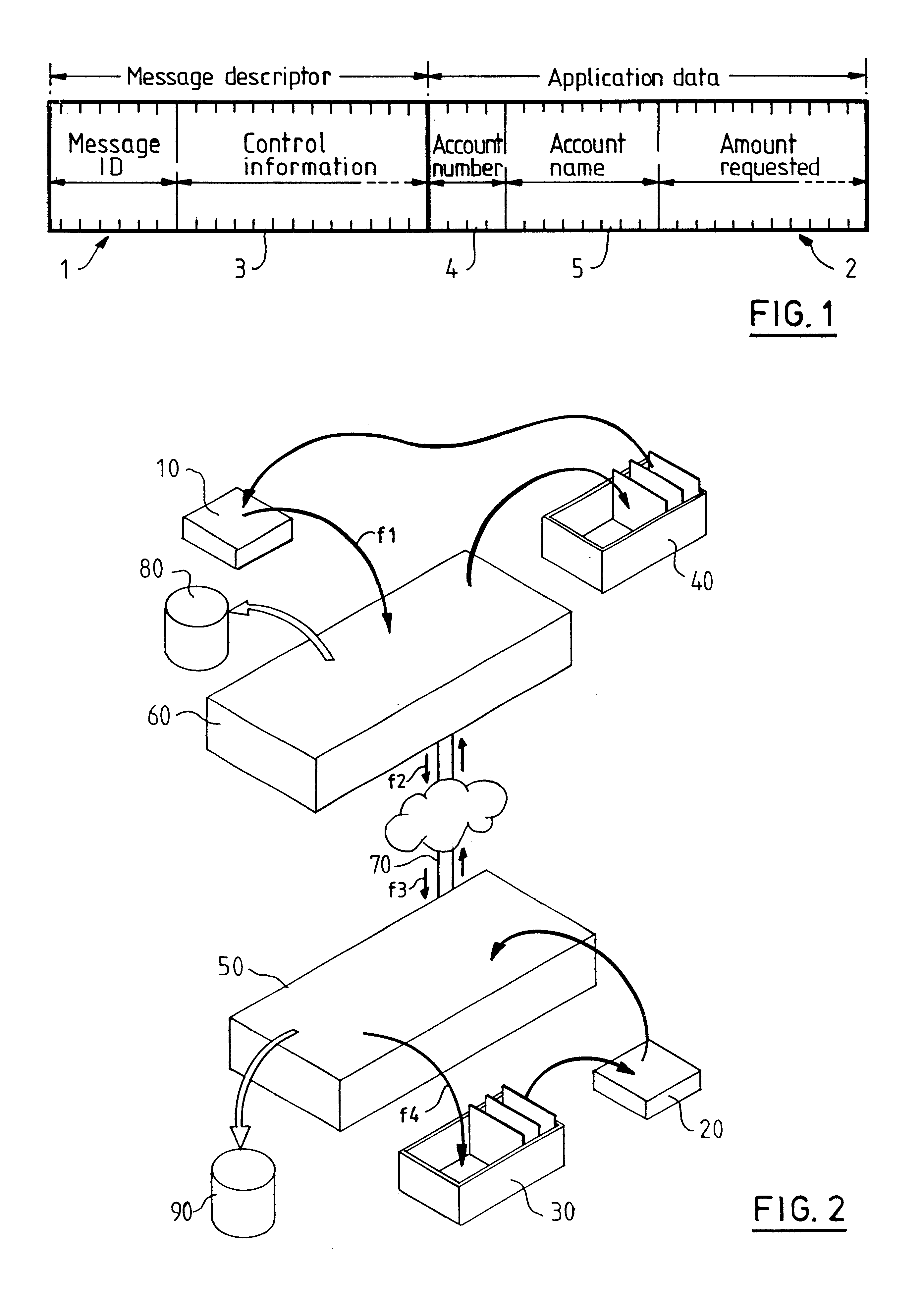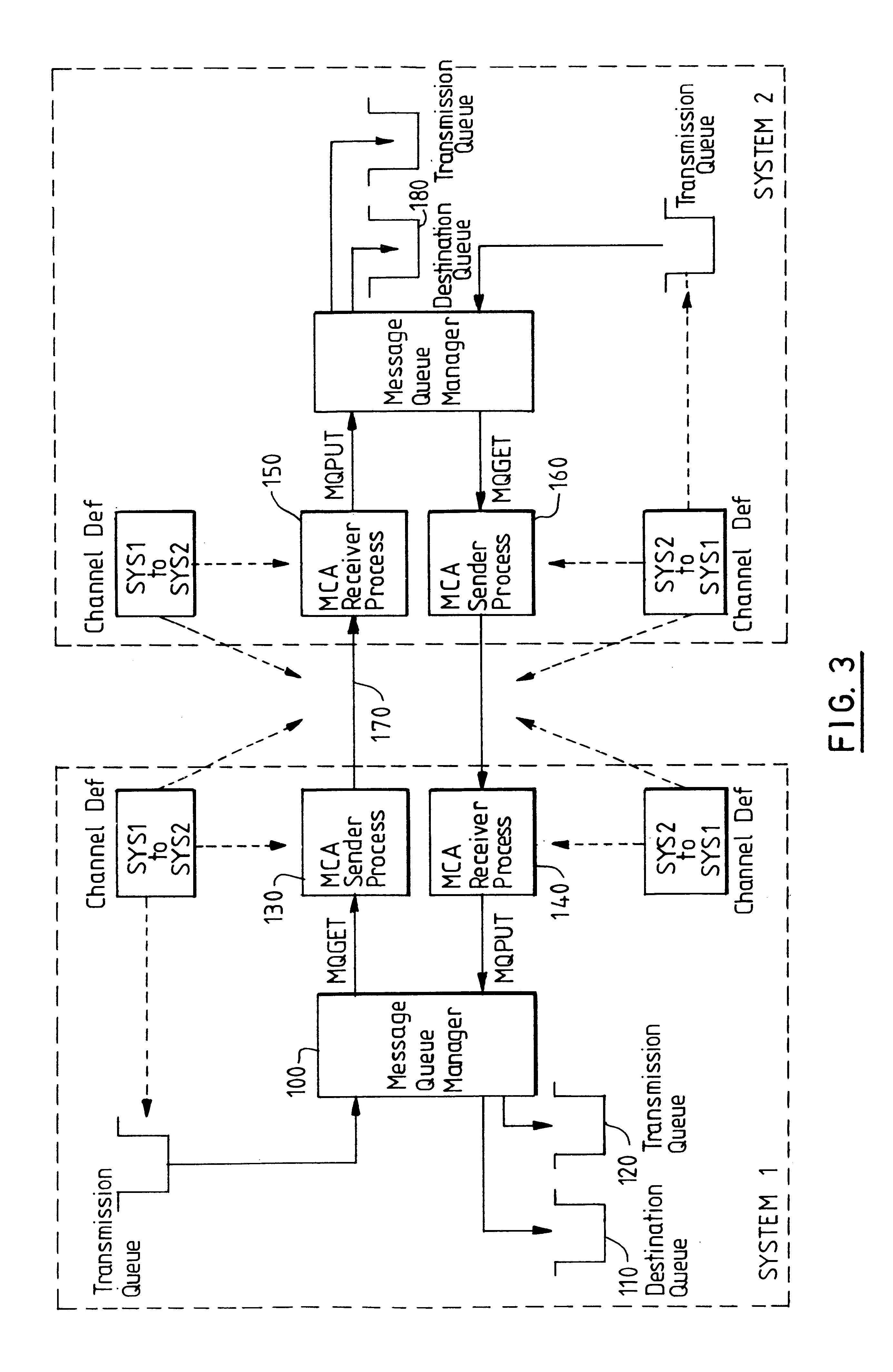Method of transferring messages between computer programs across a network
a network and message technology, applied in the field of transferring messages, can solve the problems of inability to remember all transaction systems, inability to recover non-critical resources, and inability to meet the needs of users,
- Summary
- Abstract
- Description
- Claims
- Application Information
AI Technical Summary
Benefits of technology
Problems solved by technology
Method used
Image
Examples
Embodiment Construction
The present invention will now be described in more detail with reference to the accompanying drawings in which:
FIG. 1 is a representation of the data fields making up a message;
FIG. 2 is a schematic representation of two programs communicating with each other using messaging and queuing;
FIG. 3 is a representation of two adjacent computer systems and the interrelationships between the system entities involved in message communication according to an embodiment of the present invention;
FIG. 4 is an overview flow diagram of a method of message communication between application programs according to an embodiment of the present invention;
FIG. 5 is a representation of the message flows between processes during normal forward processing in a method of communication between application programs, according to an embodiment of the present invention.
Message queuing is a message of inter-program communication which allows programs to send and receive application-specific data without having a...
PUM
 Login to View More
Login to View More Abstract
Description
Claims
Application Information
 Login to View More
Login to View More - R&D
- Intellectual Property
- Life Sciences
- Materials
- Tech Scout
- Unparalleled Data Quality
- Higher Quality Content
- 60% Fewer Hallucinations
Browse by: Latest US Patents, China's latest patents, Technical Efficacy Thesaurus, Application Domain, Technology Topic, Popular Technical Reports.
© 2025 PatSnap. All rights reserved.Legal|Privacy policy|Modern Slavery Act Transparency Statement|Sitemap|About US| Contact US: help@patsnap.com



